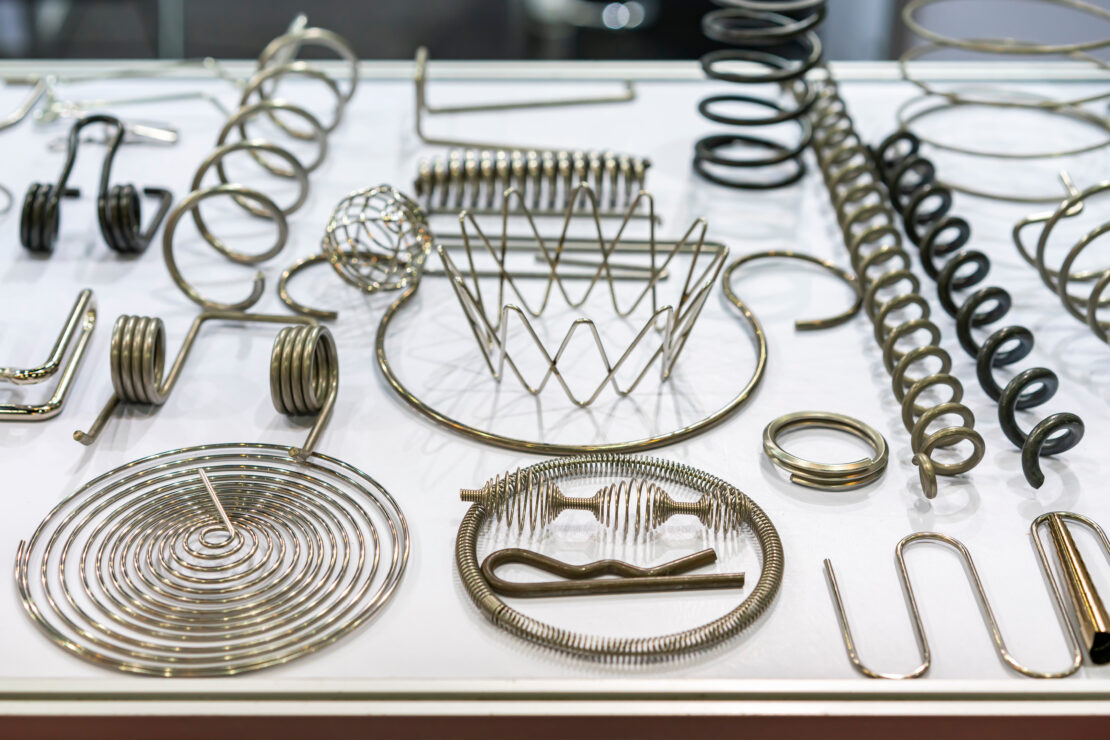
What Determines Quality in Wire Forming?
Wire forms are crucial in many applications, from automotive suspensions to electronic connectors to surgical devices, and the quality of these wire forms significantly impacts the functionality and reliability of the products they’re integrated into.
But…what determines the “quality” of a wire form? Let’s look into it.
Material
Material choice can impact the wire’s strength, flexibility, and resistance to environmental factors, such as moisture and high temperature, as different materials have different properties.
Wire forms are typically made from stainless steel, carbon steel, aluminum, or copper. Stainless steel has the highest resistance to corrosion, so it is often used in medical devices or automotive components in harsh environments. However, carbon steel has a better strength-to-cost ratio, making it ideal for construction and automotive applications where corrosion resistance isn’t as important as cost efficiency. Comparatively, aluminum is lightweight with good corrosion resistance, so it’s preferred in aerospace and electronic applications where weight reduction is critical, while copper’s excellent electrical conductivity makes it a preferred material when manufacturing electrical components.
To further complicate matters, each material type is offered in different grades. These grades all have different chemical compositions, which impacts their primary characteristics. This is why metallurgists and materials specialists are so critical.
In addition to material type and grade, the material’s surface finish can impact quality. For example, coated finishes (zinc, nickel, chrome, etc.) can improve corrosion resistance or electrical conductivity, while heat treatments can increase a material’s durability or elasticity for applications that need higher fatigue resistance.
Dimensional Accuracy
Wire forms need to integrate into larger mechanical systems without issue, which is why manufacturers must ensure high dimensional accuracy, otherwise, misalignments, mechanical wear, and stress will occur. Additionally, dimensionally accurate wire forms can be replaced or installed without adjustments.
Manufacturing Process

There are multiple ways to produce wire forms, each of which can influence their quality, consistency, and functionality.
CNC wire forming is the most accurate because it allows for complex designs with close tolerances. The process involves using CNC machines to bend and cut the wire into their final shapes.
Other manufacturing methods include:
- Multi-Slide: Wire forms are produced via multiple axes. This method is good for creating complex parts simultaneously, but the setup can be complex, and there are still some limitations in design complexity compared to CNC wire forming.
- Spring Coiling: Involves winding wire around a mandrel to a specific size and pitch and is primarily used for producing springs.
- Wire Bending: Traditional wire bending uses dies and bending machines. It’s not as precise as CNC forming and is used for simpler designs and lower-volume productions.
Design

Repeatability is key in manufacturing, so the wire form’s design must be well thought out to ensure it can be manufactured consistently. So, if a wire form has to have complex curves and bends, there will be stress points in the form where the wire is more likely to fail. Engineers have to account for these stresses by choosing materials and thicknesses that can be used to create these bends and maintain structural integrity under load.
Additionally, intricate designs often require tight tolerances, and it can be challenging to achieve them consistently without altering the wire’s properties during manufacturing.
Engineers overcome some of these challenges by using computer simulations to test different design iterations in multiple scenarios, predicting the wire’s behavior under varying loads, and identifying potential weak points.
Strength & Environmental Testing
Testing is the best way to ensure final quality in wire form. There are two primary types of tests: strength/load and environmental.
Strength and load tests put the wire form under tension or compression to measure its ability to maintain shape and functionality under stress, identify points of failure, and discover areas that need reinforcement. Strength testing isn’t necessarily done as a “final quality control” step but can be integrated throughout the manufacturing process, primarily because it can help manufacturers refine the form’s overall design.
Environmental testing exposes the wire forms to extreme temperatures, humidity, salt spray, UV exposure, and other harsh conditions to see how well they resist these stresses—this type of testing is particularly critical for applications where corrosion resistance or high temperature resistance is needed.
Get Quality Wire Forms From King Steel Fasteners
Beyond the factors discussed in this blog, expertise has the most influence, which is why it’s important to partner with an experienced wire form manufacturer.
King Steel Fasteners has been engineering hog rings, staples, clips, V-hooks, CV hooks, and other wire forms for nearly three decades. All wire forming is produced in-house in the United States using our OMCB CNC bender.
Please contact us today to learn more about our wire forming capabilities and how we ensure quality or visit our website for more resources.
